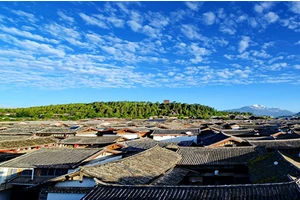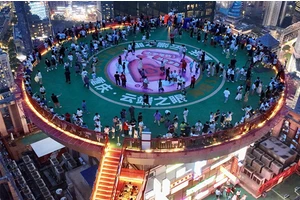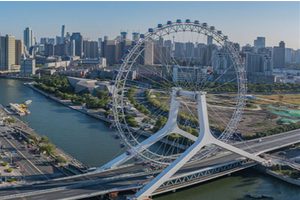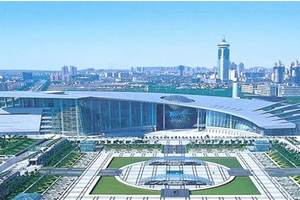Where is good for Japanese tourism?
Winter is the season for many people to travel, and Japan, a country that can enjoy beautiful scenery, delicious food and shopping, is the first choice for most people to visit. How about traveling to Japan in winter?
1. How about traveling to Japan in winter?
Ok.
Japan is suitable for sightseeing all the year round. There are different scenery before going in different seasons, and it snows everywhere in Japan. At this time, you can go skiing in hot springs in Japan, or go to Okinawa to avoid the cold and watch whales, or spend Christmas in big cities during the sale season before shopping. All these are different ways of wintering.
2. Where to play in Japan in winter?
Sensoji Temple
Recommended index: ★★★★★★★
Sensoji Temple, the oldest and most popular temple in Tokyo, is also the center of Asakusa area, and its deity is Holy Guanyin. It was built in the 7th century and was rebuilt after repeated fires. According to legend, the temple was built because three fishermen fished up a small statue of the goddess of mercy about 5.5 cm high when they went fishing.
Ginza
Recommended index: ★★★★★★★
Ginza is the most famous business district in Tokyo and the most representative bustling business district in Japan. It is famous for its high-end shopping shops, gathering top-class flagship stores, high-end department stores and various century-old shops, and is as famous as the Champs Elysé es in Paris and Fifth Avenue in New York. You can see the scene of Ginza in various film and television shots.
Hokkaido
Recommended index: ★★★★★★★
Coming to Hokkaido in winter is definitely the most worthwhile of the four seasons. Snow is a symbol of Hokkaido. At the beginning of February every year, Sapporo Ice and Snow Festival attracts 2 million tourists to compete here and make the most impressive ice and snow sculptures. These ice and snow giants can be seen everywhere, whether in parks or other parts of the city.
Tokyo Tower
Recommended index: ★★★★★☆.
Before the completion of Sky Tree, the Tokyo Tower was always a symbol of Tokyo. This tower is higher than the Eiffel Tower in Paris. The lighting on the tower is designed and presided over by the world-famous lighting designer Kazuo Ishii. The lighting time is between sunset and midnight. The lighting color changes with the seasons, with white in summer and orange in spring, autumn and winter.
There is a watchtower on the tower, which can see the whole scenery of Tokyo through the glass. At the bottom of the tower, there are the First Wax Museum in the Far East, the Modern Science Museum, the TV studio and various special shops.
Kiyomizu Temple
Recommended index: ★★★★★☆.
Kiyomizu Temple, founded in 778, is the oldest temple in Kyoto, and was listed in the World Cultural Heritage List in 1994. The Shimizu stage hanging in front of this hall is a national treasure of Japan, surrounded by green trees. It is one of the cherry blossom viewing places in Kyoto in spring, and it is also a maple viewing resort in autumn.
Shinsaibashi
Recommended index: ★★★☆☆☆
Located in the downtown area of Osaka, Shinsaibashi is the largest commercial shopping area in Osaka, with Shinsaibashi commercial street as the center, Nagato in the north and Dotonbori in the south. There are many boutique houses, specialty stores, restaurants and large shopping centers, and there are bustling citizens and tourists from morning till night.
Jingesi
Recommended index: ★★★☆☆☆
Spring and autumn are the tourist seasons of the Golden Pavilion Temple, but in fact, the scenery here has different beauty all year round. Whether it is the fiery red leaves in late autumn or the snow and silver in winter, it reflects the uniqueness and fascination of the Golden Pavilion Temple.
Ueno Park
Recommended index: ★★★☆☆☆
Ueno Park has a large area, which contains various plants, zoos, art galleries, museums, etc. The bronze statue of Saigō Takamori, a hero of Meiji Restoration, is the symbol of Ueno Park. It is also a famous place to watch cherry blossoms. During the blooming period, many tourists will come here to watch them. Because Lu Xun's sentence "Sakura in Ueno" is nothing more than this, Ueno has become one of the earliest names of Tokyo remembered by many China travelers. You can look for the statue of the China literary giant next to Shinobazu Pond in Ueno Park.
Mount Fuji
Recommended index: ★★★☆☆☆
Mount Fuji stands in the west of Tokyo. It is one of the largest active volcanoes in the world and a symbol of Japan. Xianggen is the most ideal place to see Mount Fuji. On sunny days, especially in winter, Mount Fuji can be seen from far away. The highest mountain in Japan (3775.63 meters above sea level) is covered with white snow, just as charming as the landscape painting on the postcard. When the weather is bad, you need to be close to see it.
3. Where to see the snow in Japan in winter?
Hokkaido
Winter in Hokkaido is a silver world made up of bright sunshine and dazzling snow, a fairy tale world in girls' dreams, and a paradise for gourmets. How can we not visit Hokkaido in the snow season?
Mount Fuji
Mount Fuji is located in the southwest and west of Tokyo, Japan, about 80 kilometers away. It is a dormant volcano in Shizuoka Prefecture and Yamanashi Prefecture. Its main peak is 3,776 meters above sea level, which is the highest peak in Japan. It is also known in ancient literature. The top of the mountain is covered with snow all year round, belonging to the Fuji Hakone Izu National Park in Honshu and one of the top 100 mountains in Japan.
Jingesi
Kinkaku Temple is one of the must-see spots when traveling to Kyoto. No matter from which angle, you can appreciate its unique beauty. Every winter, the snow scene of Jingu Temple always attracts a large number of tourists to watch. The Golden Pavilion Temple, which is wrapped in silver, has a striking contrast between gold and white. What unfolds before our eyes is a sacred landscape.
Duyue bridge
Duyue Bridge is a bridge located in Guachuan, Kyoto, and it is very famous as a building representing Lanshan. The point of view of the snow scene of Duyue Bridge is that, with Duyue Bridge as the background, the snow-covered mountain has a different feeling by moving and watching the white clothes of Lanshan.
Lanshan bamboo forest
Located in the western suburbs of Kyoto, Lanshan is a famous scenic spot in Kyoto, including Yueyue Bridge, Baojinchuan Cruise, Bamboo Forest, sagano Sightseeing Train, Tianlong Temple and many other famous scenic spots. No matter which season you visit, the bamboo forests have different views. Especially when winter comes, snow and bamboo forests on both sides present a mysterious and quiet atmosphere, which makes people relaxed and happy.
Is it cold to go to Japan in winter?
What area to see.
Japan has a large span from north to south. Whether it is very cold in winter depends on what area you visit. For example, Hokkaido in the northernmost part may be tens of degrees below zero in winter, which is relatively cold, while Okinawa in the south is also relatively warm in winter, with an average temperature of about 10-15 degrees.
5. What clothes to wear to Japan in winter?
Autumn clothes+sweater+down jacket.
There is a great temperature difference between the north and the south of Japan, so if you go to Japan in winter, you should bring clothes according to the temperature of the place you go. Generally, you should wear warm autumn clothes+sweaters+down jackets. If you want to go skiing or mountain, you should wear thicker jackets and ski clothes.
1. Japan is a tourist destination all year round, and each season has its own unique scenery and activities.
2. Spring (March to May): Choose Tokyo, Nagoya, Nagasaki, Kyoto and other places. The climate is gradually warming up, everything is reviving, and cherry blossoms are in full bloom. From the end of March to the beginning of April every year, the front line of cherry blossoms goes by, which becomes the best time to enjoy cherry blossoms in Japan. Cherry blossoms decorate the countryside and courtyard, which is beautiful.
3. Summer (June to August): Okinawa, Nagoya and Nagasaki are recommended. Although there is a rainy season in June, July to August is the midsummer in Japan, and the beaches are very lively, and the summer mountain area also attracts many tourists. In addition, summer is the most abundant period of Japanese festivals.
4. Autumn (September to November): At this time, you can go to Kyoto, Tokyo, Nagoya, Osaka and other places to enjoy the best scenery of Japanese red leaves. The flaming autumn leaves are everywhere in the Woods, just like a passionate flame, and you are in a happy mood when you stroll through them.
5. Winter (December to February): If you want to experience the snow scene, you may wish to go to Mount Fuji and other areas. Mount Fuji has a spectacular snow scene in winter, which is an excellent choice for photographers and nature lovers.






